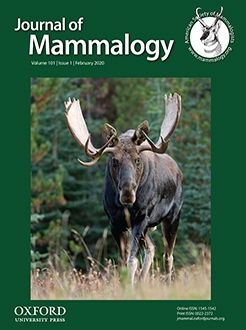Knowledge of the spatiotemporal variability of abundance and vital rates is essential to the conservation of wildlife populations. In Pacific Northwest forests, previous small mammal research has focused on estimating abundance; few studies have focused on vital rates. We used robust design temporal symmetry models and live-trapping data collected 2011–2016 at nine sites to estimate apparent annual survival, population growth rate, and recruitment of Humboldt's flying squirrels (Glaucomys oregonensis) and Townsend's chipmunks (Neotamias townsendii) in a late-successional forest of the Cascade Mountains of Oregon, United States. We also estimated the proportional contribution of apparent annual survival and recruitment to population growth rate. Covariates previously associated with abundance were also associated with vital rates for Townsend's chipmunks, but less so for Humboldt's flying squirrels. Apparent annual survival was nearly constant (range = 0.47 to 0.51) among years and sites for Humboldt's flying squirrels but was consistently lower and more variable among years for Townsend's chipmunks (range = 0.13 to 0.31). Recruitment was variable among years for both species. Apparent annual survival generally contributed more than recruitment to the population growth rate of Humboldt's flying squirrels. For Townsend's chipmunks, recruitment consistently contributed more than apparent annual survival to population growth rate. These findings suggest that life history strategies differed for these co-occurring species. This study demonstrates substantial temporal variation in vital rates and some differences in abundance and vital rate habitat associations, suggesting that habitat suitability inferences based on short time series or variation in abundance could be misleading.
How to translate text using browser tools
28 December 2019
Spatiotemporal dynamics in vital rates of Humboldt's flying squirrels and Townsend's chipmunks in a late-successional forest
Matt Weldy,
Clinton W. Epps,
Damon B. Lesmeister,
Tom Manning,
Eric D. Forsman
ACCESS THE FULL ARTICLE

Journal of Mammalogy
Vol. 101 • No. 1
February 2020
Vol. 101 • No. 1
February 2020
H. J. Andrews Experimental Forest
live trapping
mark-recapture
multispecies
proportional contribution
robust design
Spatiotemporal variation




